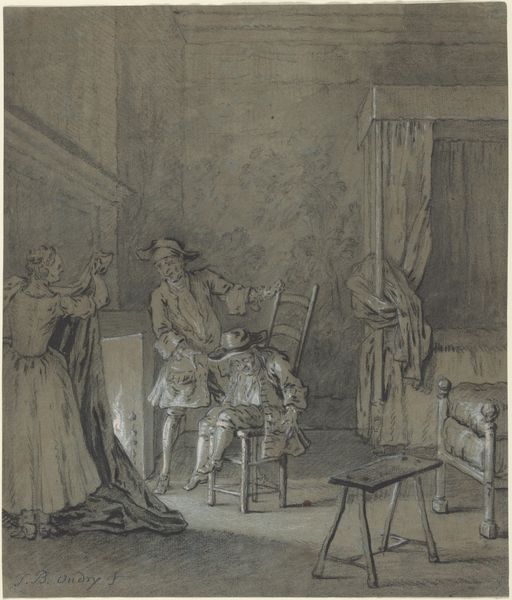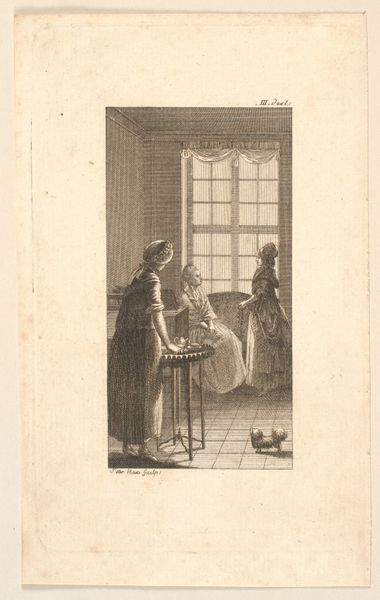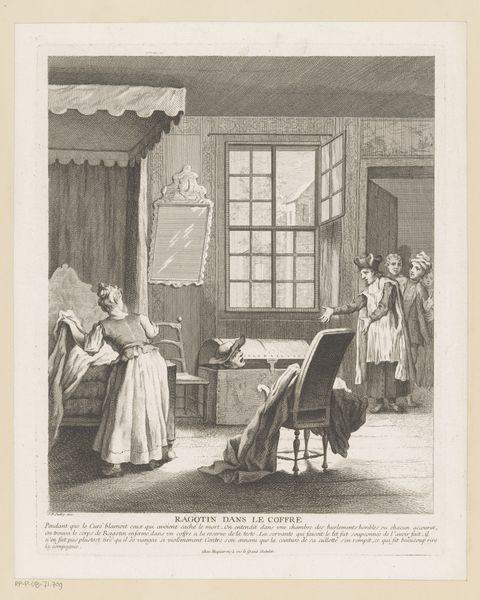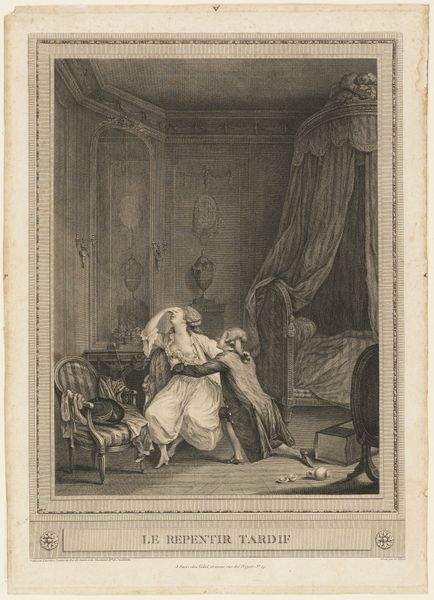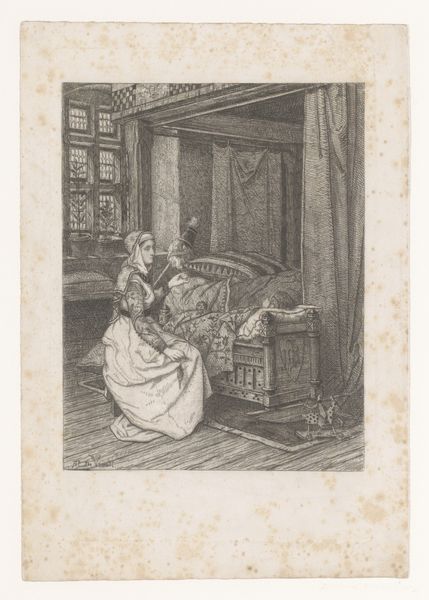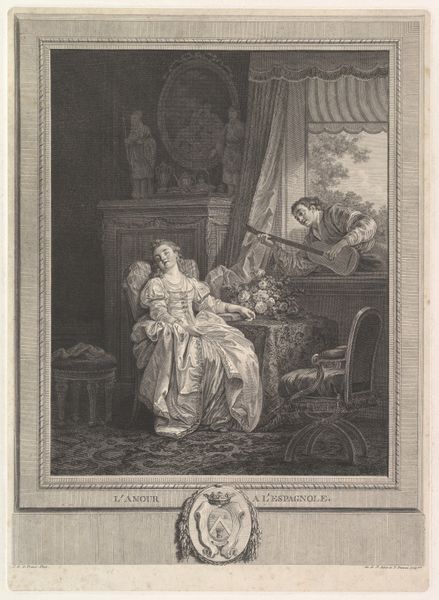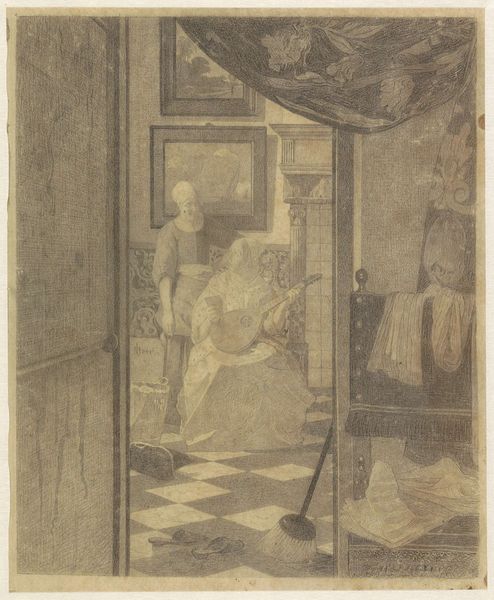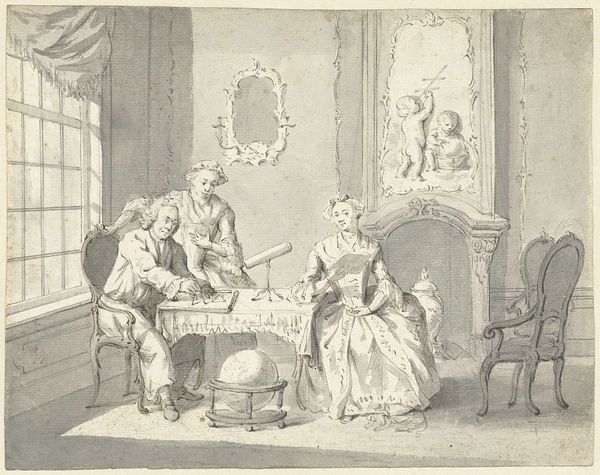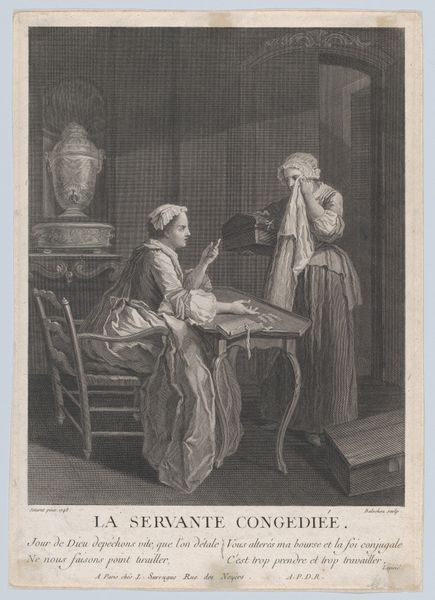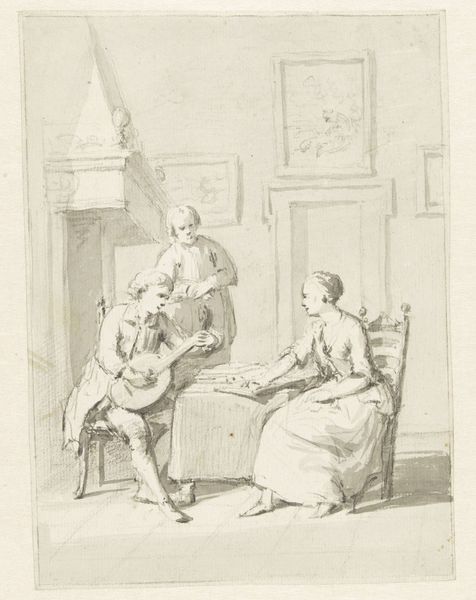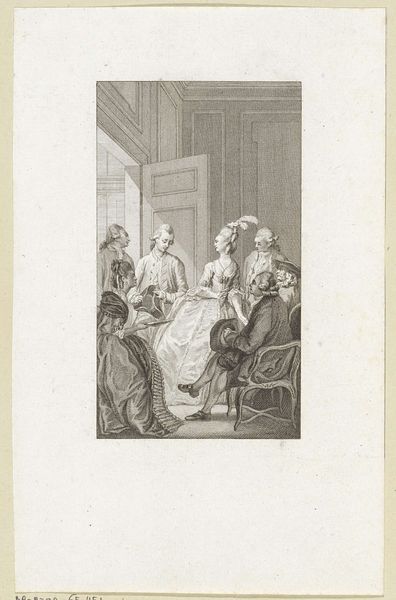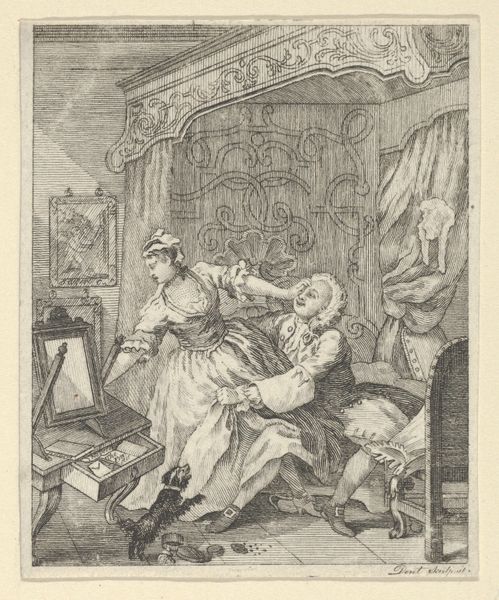
drawing, pencil
#
drawing
#
pencil sketch
#
figuration
#
pencil
#
genre-painting
#
rococo
Dimensions: overall: 32.8 x 27.9 cm (12 15/16 x 11 in.)
Copyright: National Gallery of Art: CC0 1.0
Curator: Jean-Baptiste Oudry created "Ragotin dans le coffre," or "Ragotin in the Chest" in 1737, rendered delicately with pencil on paper. It’s a snapshot of a comedic scene from a period drama. What are your initial thoughts? Editor: It's undeniably unsettling. There's a feeling of voyeurism, with figures peering into a room where a woman seems preoccupied with the bed. It feels intrusive and raises questions about power dynamics within the scene. Curator: Exactly, the charm of rococo often masks complex social structures. This drawing offers a glimpse into the performance of gender roles and class distinctions of the 18th century. The literary context is important here. This is an illustration referencing Paul Scarron’s novel "Le Roman comique"–a very popular burlesque novel where the character of Ragotin, known for his clumsiness and ridiculous nature, finds himself in comical, often compromising situations. Editor: So, the men lurking at the door are about to witness—or participate in—Ragotin's humiliation. Considering it through a contemporary lens, the image evokes questions about consent, public shaming, and how entertainment is derived from another's misfortune. Are we invited to laugh *with* or *at* Ragotin? Curator: Scarron’s novel played with those tensions precisely! It was a commentary on the societal gaze itself, exploring who has the right to look, and who becomes the object of spectacle. Think of the way the figures are arranged; the window creates a framed view of the 'private' sphere for these onlookers. And then consider, who exactly had access to view artworks like these? Editor: Access, right, so much depended on class and status during the 1700s. And considering this as a preparatory drawing…I find it interesting how Oudry chose to represent it; pencil emphasizes the sketch's intimate nature, bringing forward an underlying rawness, which makes it less refined, and possibly more real, or relatable? Curator: I would say so, that decision to leave it as a sketch opens the image to broader interpretations. Editor: Seeing the Rococo period through this unflinching, unromantic lens makes one confront some uncomfortable truths about past power dynamics, doesn't it? It disrupts any idealized vision of the era.
Comments
No comments
Be the first to comment and join the conversation on the ultimate creative platform.
